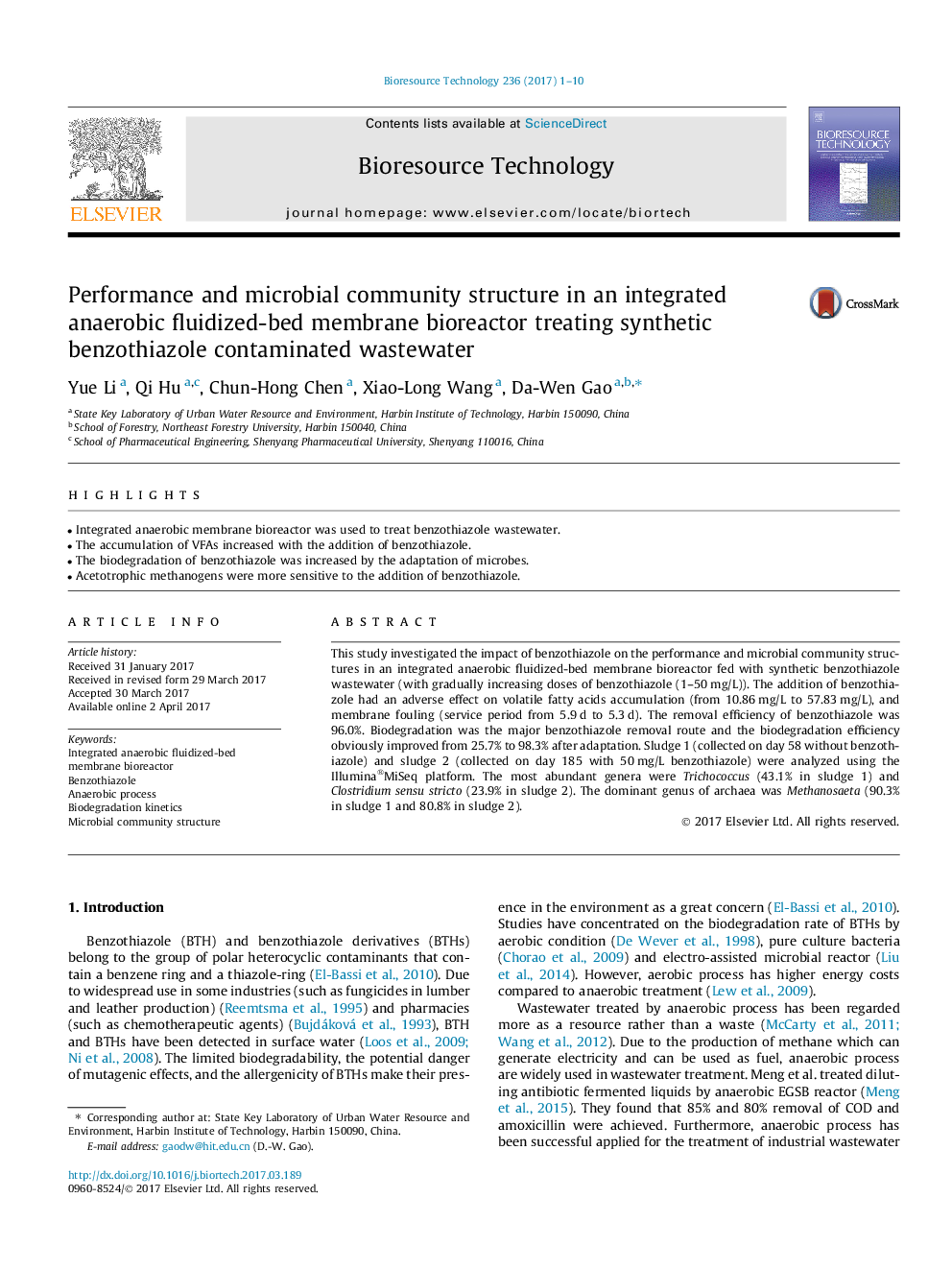| کد مقاله | کد نشریه | سال انتشار | مقاله انگلیسی | نسخه تمام متن |
|---|---|---|---|---|
| 4997098 | 1459907 | 2017 | 10 صفحه PDF | دانلود رایگان |
- Integrated anaerobic membrane bioreactor was used to treat benzothiazole wastewater.
- The accumulation of VFAs increased with the addition of benzothiazole.
- The biodegradation of benzothiazole was increased by the adaptation of microbes.
- Acetotrophic methanogens were more sensitive to the addition of benzothiazole.
This study investigated the impact of benzothiazole on the performance and microbial community structures in an integrated anaerobic fluidized-bed membrane bioreactor fed with synthetic benzothiazole wastewater (with gradually increasing doses of benzothiazole (1-50Â mg/L)). The addition of benzothiazole had an adverse effect on volatile fatty acids accumulation (from 10.86Â mg/L to 57.83Â mg/L), and membrane fouling (service period from 5.9Â d to 5.3Â d). The removal efficiency of benzothiazole was 96.0%. Biodegradation was the major benzothiazole removal route and the biodegradation efficiency obviously improved from 25.7% to 98.3% after adaptation. Sludge 1 (collected on day 58 without benzothiazole) and sludge 2 (collected on day 185 with 50Â mg/L benzothiazole) were analyzed using the Illumina®MiSeq platform. The most abundant genera were Trichococcus (43.1% in sludge 1) and Clostridium sensu stricto (23.9% in sludge 2). The dominant genus of archaea was Methanosaeta (90.3% in sludge 1 and 80.8% in sludge 2).
Journal: Bioresource Technology - Volume 236, July 2017, Pages 1-10
